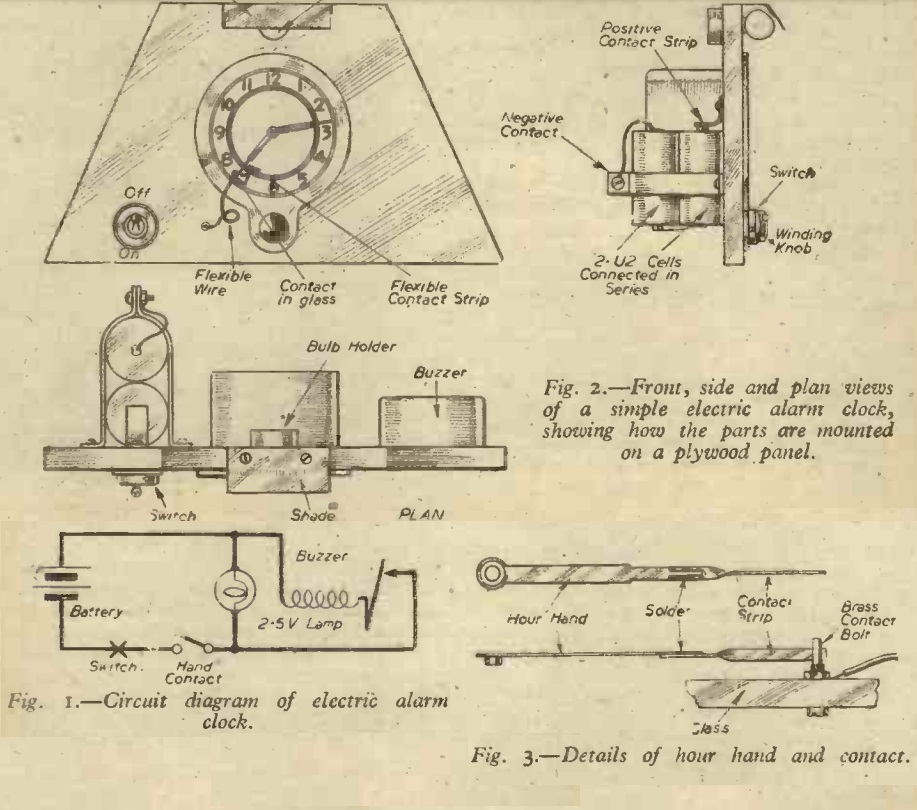 War meant shortages of many things in Britain, and one of those things was alarm clocks. But people had to get up, and the July 1943 issue of Practical Mechanics carried these plans for taking matters into your own hands. It was sent in to the magazine by one R.W. Lewthwaite of Plymouth.
War meant shortages of many things in Britain, and one of those things was alarm clocks. But people had to get up, and the July 1943 issue of Practical Mechanics carried these plans for taking matters into your own hands. It was sent in to the magazine by one R.W. Lewthwaite of Plymouth.
It’s not a new idea. We’ve previously shown similar designs from 1911 and 1921. The basic idea is quite simple. Since the metallic hour hand is going around anyway, you can set it to make electrical contact at a certain hour and turn on a bell or buzzer. In this case, it turns on both a lamp and buzzer, powered by two flashlight batteries. A switch is also included to turn it off when not in use.
Here, a thin brass extension is soldered to the hand so that it can make contact with a bolt mounted in the glass face. The article even includes instructions for the delicate process of drilling through the glass. The thin brass strap has sufficient slack so that it doesn’t slow down the clock. If that turns out to be a problem, then a thinner piece of brass should be used.
According to Mr. Lewthwaite’s letter to the magazine, there has been a lot of discussion lately about the short supply of alarm clocks. But fortunately, he was able to find an adequate supply of “eight-day car clocks” to press into service. Presumably, lack of fuel meant that the market for automotive accessories had dried up.
As we noted in our earlier posts of similar ideas, young STEM enthusiasts can use a similar idea to make their own alarm clock.
